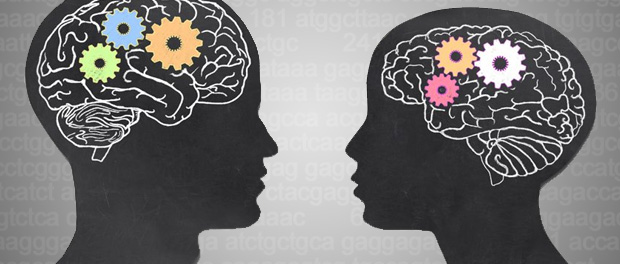
Did you know that most animals’ brains develop to be either female or male? Certain portions are different sizes and the amount of neurons and synaptic connections vary. These structural differences likely explain why women and men generally differ in terms of language abilities, navigational skills, and response to emotional situations. While the sexualization of the brain happens prenatally, scientists are still wondering how exactly this differentiation happens. A study conducted by a research team at UM SOM, the University of Maryland School of Medicine, gives us insight into the mysteries of this masculinization and feminization process.
Professor and Chairman of the Department of Pharmacology, Margaret McCarthy, PhD has been investigating how newborn rats’ brains develop. She discovered that giving them estradiol, a derivative of testosterone, suppressed DNMT activity which then decreased DNA methylation. This decrease in DNA methylation restored expression or unsilenced certain genes. In this case, they unsilenced the particular genes that cause masculinization of the brain. DNA methyltransferases (DNMTs) are enzymes known to catalyze the process DNA methylation. They do so by adding methyl groups (CH3) onto the DNA using S-adenosyl methionine (SAM) as the methyl donor. The research paper, published in Nature Neuroscience, demonstrates how this critical organ forms into either a male or female brain.
“Nobody has ever shown that this is how the process works,” Professor McCarthy said. She worked with Bridget Nugent, PhD, who is now at the University of Pennsylvania. “This gives us a new understanding of how gender is determined in the brain.”
Inhibiting DNA methyltransferases has significant impact inside and outside the standard timeframe of prenatal development, Professor McCarthy and Nugent found. Typically there’s a time-sensitive period during prenatal development during which female or male characteristics form. Once this time frame ends, it was previously thought that it couldn’t be reopened. However, this study suggests otherwise. The researchers were actually able to turn the female rats’ brains into one with male characteristics even after the window of development had expired.
The researchers injected DNA methyltransferase inhibitors into a region of the female brains known as the POA, the preoptic area. The POA is known to play a significant role in male sexual behavior in humans and every other species that have been studied. After the first week of life, when the time frame was thought to be closed, the researchers injected DNMT inhibitors into the female rats. Surprisingly, they found that the POA actually transformed and developed characteristics of the male rat brain.
The group of scientists used a kit to extract nuclear proteins from the mouse brain sections, measured relative levels of DNA methyltransferase activity in the POA, and then quantified global methylation of DNA. They also assessed the level of DNA methylation via whole-genome bisulfite sequencing. They reported that gonadal steroids in this particular area “reduce activity of DNA methyltransferase (Dnmt) enzymes, thereby decreasing DNA methylation and releasing masculinizing genes from epigenetic repression.”
They found that the female rats acted differently and displayed typical male sexual behavior when introduced to a sexually receptive female rat. In subsequent investigation, they worked with female mice and found that they exhibited male behaviors when the Dnmt gene was genetically deleted.
Nugent explained: “Physically, these animals were females, but in their reproductive behavior, they were males. It was fascinating to see this transformation.”
In a separate study, Professor McCarthy and Nugent also discovered that microglia, or inflammatory immune cells, may be involved in masculinization because they produce prostaglandins, a neurochemical that’s typically linked to illness. Researchers have recently been realizing the integral connection between the immune system and brain development. McCarthy has shown for the first time that these inflammatory immune cells are critical for establishing sex differences in the brain.
This epigenetic research uncovers new details about the underlying mechanism of the masculinization and feminization of the brain, bringing into question the time-sensitive prenatal development period, and bringing us closer to understanding the effects DNA methyltransferase and DNA methylation have on the flexible formation of the brain’s “gender.”
Source: Nugent, B.M., Wright, C.L., Shetty, A.C., Hodes, G.E., Lenz, K.M., Mahurkar, A., Russo, S.J., Devine, S.E., McCarthy, M.M. (2015) Brain feminization requires active repression of masculinization via DNA methylation. Nature Neuroscience, 18:690-697.
Reference: University of Maryland School of Medicine. UM SOM Researchers Unravel Mechanism That Plays Key Role in Sexual Differentiation of Brain. 31 Mar 2015. Web.


